My old shooting board was the first one I ever made and, while it worked well for a while, it has been used a lot and is starting to show issues. The fence isn't very secure and I don't think there's much I can do about it given that the base is made out of MDF.
I've put up with it for a while, but I decided to have a go at making something better. I've always struggled a bit with having my right hand pushing the plane down, left and forward while having my left hand nudging the work piece gradually to the right. I often found I was letting the plane shift out to the right and away from the workpiece, which could result in a non-square edge.
This morning's effort was an attempt to fix that problem as well as adding a more easily adjustable fence:
Side view:
The fence is a gert big lump of oak with some 8 mm holes drilled through and chamfers on the bottom corner and the corner where the plane exits. There are M6 × 25 threaded inserts in the base: the M6 screws are loose in the 8 mm holes to allow for some adjustment.
This bit is what I think is the most unusual thing on my shooting board:
The top piece of plywood has a rebate cut in its underside and there's a support on the right of the track (again adjustable, this time with M5 screws). Four surfaces are covered in UHMW-PE tape (which is very slippery): the base surface, the side of the right-hand side support and both faces that make up the rebate. One end of the side support thing is slightly chamfered for ease of access.
These 3D printed inserts are a fairly snug but free running fit in that slot:
The inserts are a close fit on the side of the planes and, in combination with the side support, stop the plane from trying to move to the right while shooting.
I've only tried it a few times, but it worked beautifully so far (much better than the old shooting board). I've also done a test where I rotated a piece of 200 mm square plywood four times, planing relative to the previous face each time (to exaggerate any out of square errors) and the last face was perfectly square to the first face.
It's a lot nicer to use than my older shooting boards (of two different types, but both with an open right-hand side) as the plane doesn't try to move to the right and its much easier to control it and ensure the cut is square.
I've also made a box mitre attachment for it, but that hasn't got any particularly unusual features:
It's adjustable for squareness (with an M6 hex-head set screw in a threaded insert with a nut to lock the position), but not for the angle of the mitre:
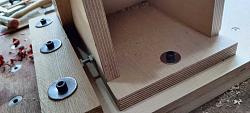



 LinkBack URL
LinkBack URL About LinkBacks
About LinkBacks
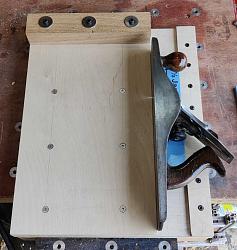
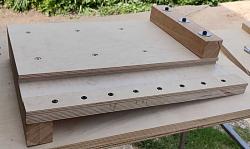
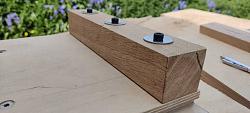
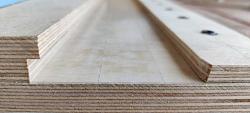
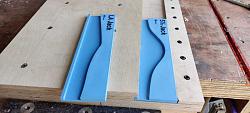
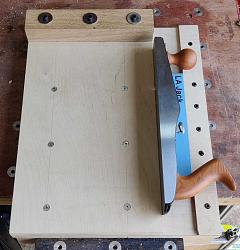
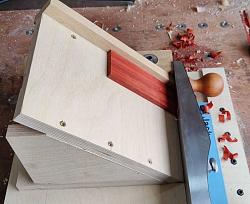


 Reply With Quote
Reply With Quote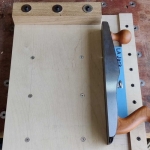


Bookmarks